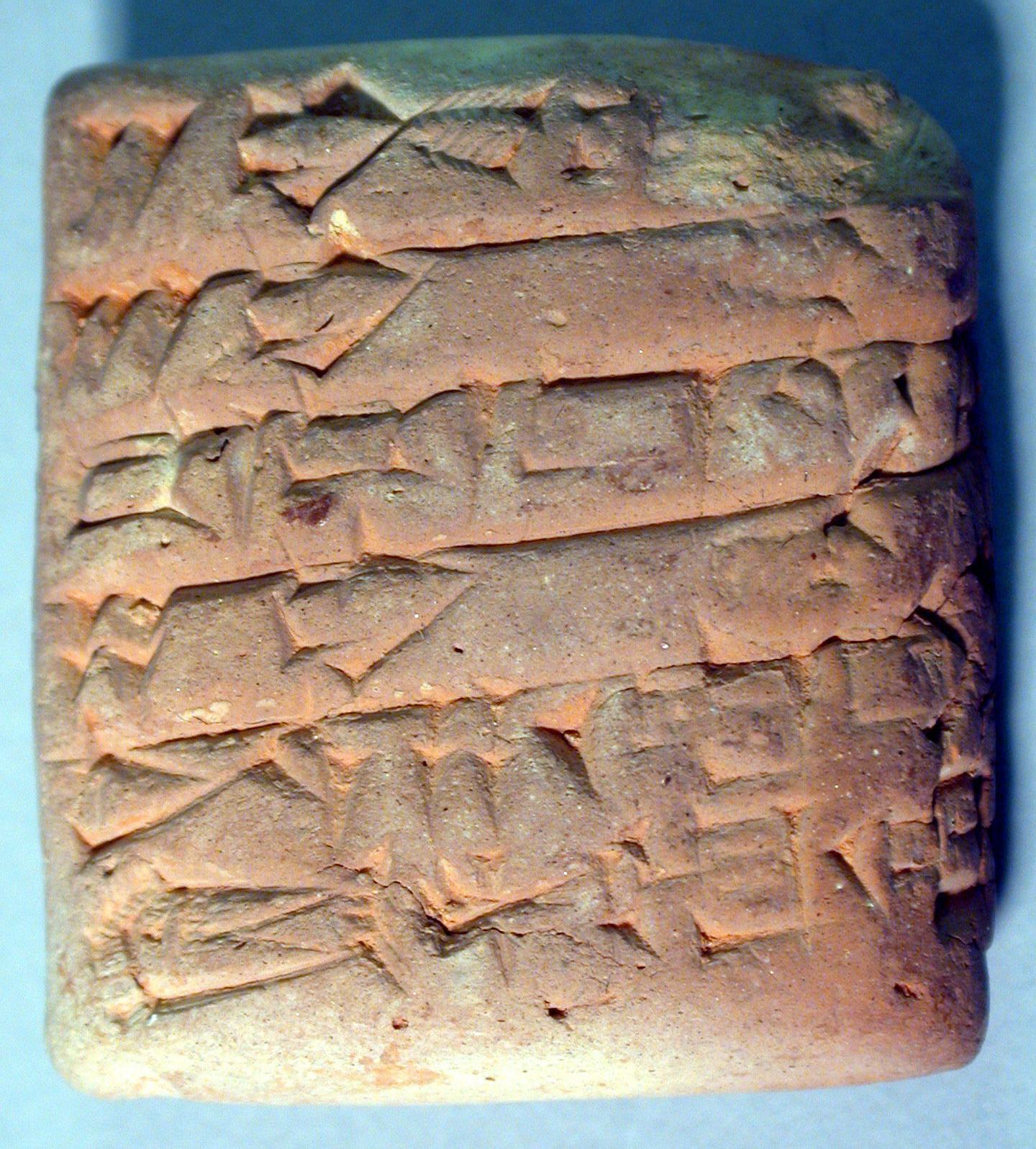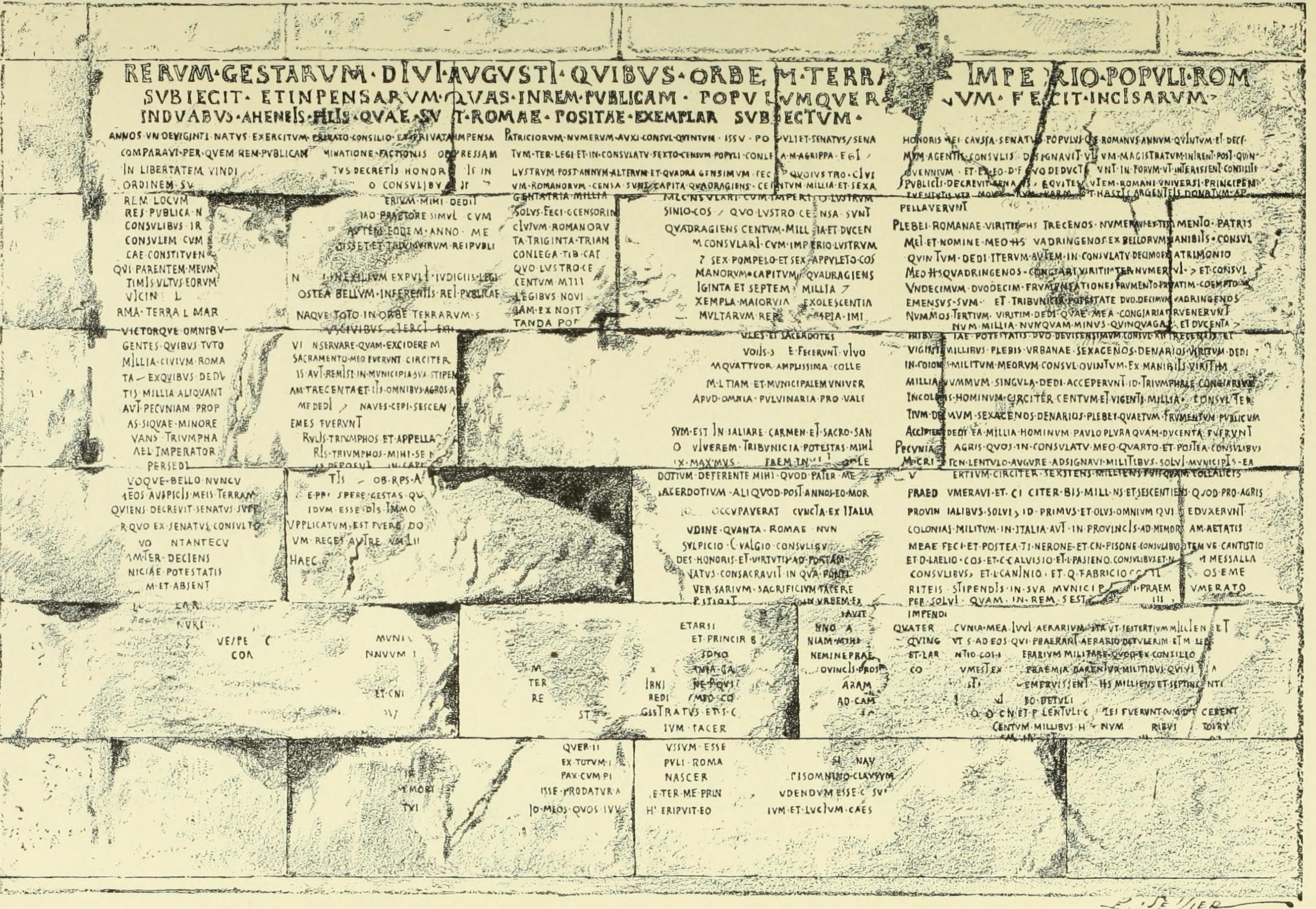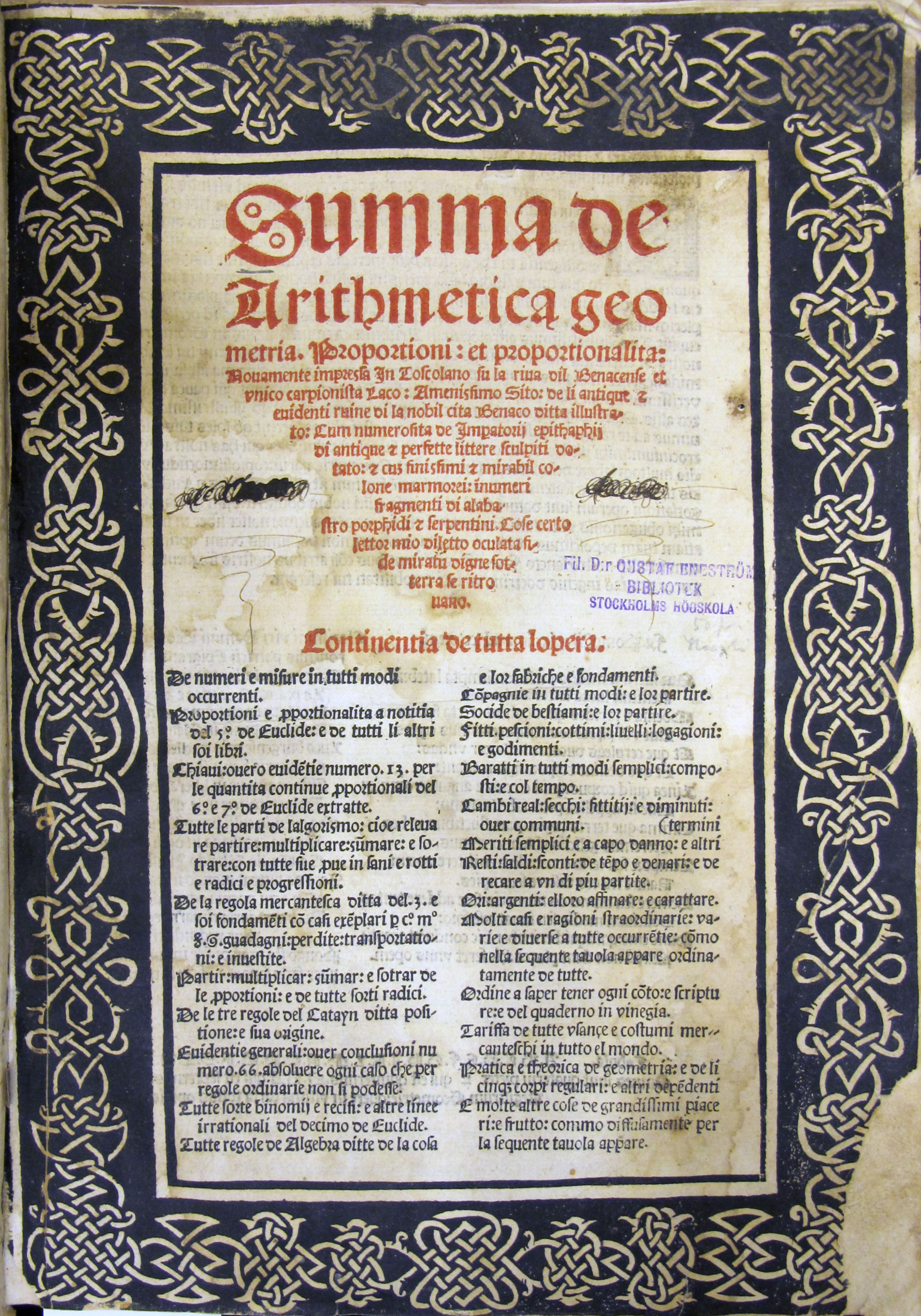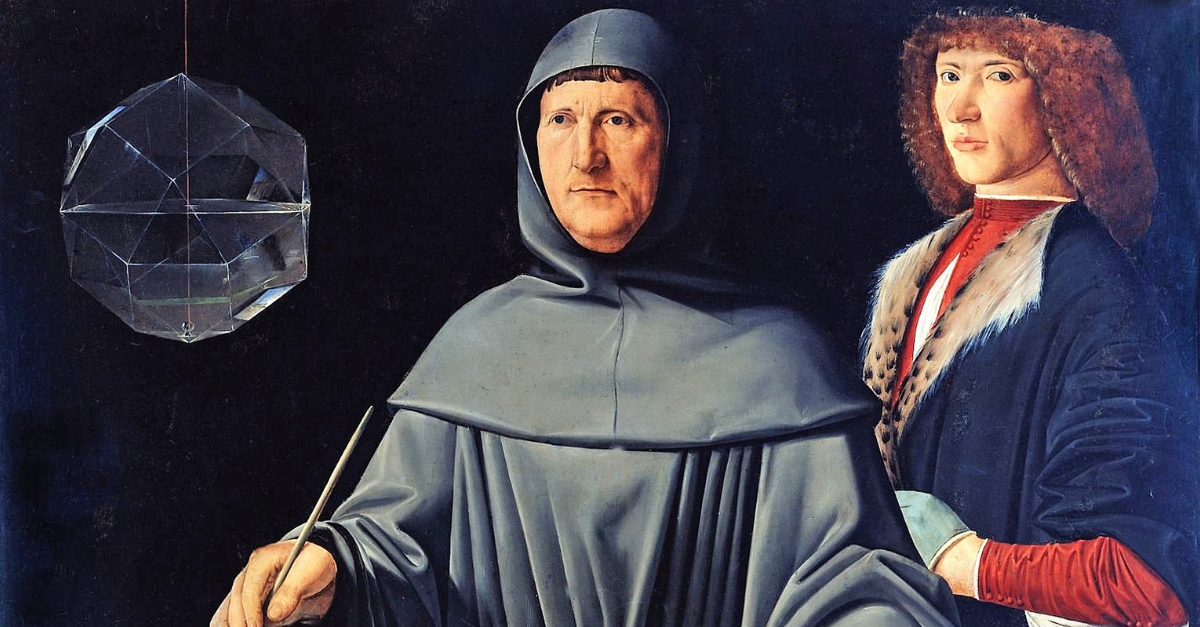Luca Pacioli (pictured above) might have popularised the double entry method, but the history of accounting goes beyond him – it goes all the way back to 3,000 BC, in Mesopotamia. In fact, it might be said that the oldest examples of writing we have are actually financial statements.
A Mystery Solved

Cuneiform receipt of oxen ca. 2050 BCE (source: metmuseum.org)
Clay tablets, inscribed with cuneiform (which is like hieroglyphics), were found in the ruins of the ancient city of Uruk. The cuneiform was indecipherable to the archaeologists – they couldn't work out what the symbols were meant to represent. It was only in the 1970s, when Denise Schmandt-Besserat linked the tablets to small clay tokens of common commodities, like loaves of bread and earthenware. She theorised that the symbols were depicting jars and cattle, and the stamps next to them showed the amount of these items that had passed through into a warehouse.
Roman

The Deeds of the Divine Augustus, Ankara, Turkey (source: Internet Archive)
Fast forward 3,000 years, and the Roman empire is in full swing. Money-minded ruler Augustus wrote a proto-LinkedIn post entitled The Deeds of the Divine Augustus. In it, he details the generous gifts he provided his subjects and the exact amounts of these gifts. Lines like "I paid to the Roman plebs HS 300 per man from my father's will and in my own name gave HS 400 from the spoils of war" repeat for a number of paragraphs. Augustus' attention to detail led him to write one of the first accounts of public revenue.
Double Entry
The origins of double entry bookkeeping are controversial – the answer you receive depends on who you ask. There's evidence of it all across Asia, from Persia to China. In fact, Genghis Khan helped popularise the concept – accountants were the first to enter a conquered city, to tally up the war chest.
However, Luca Pacioli is often considered the father of modern accounting, at least in the West. Never mind that the concept had been banded around the world for centuries, in 1494, he wrote a textbook describing double entry bookkeeping that took Europe by storm. He followed this up with a book that explained to readers how to juggle and do a few card tricks.

Summa de arithmetica, geometria, proportioni et proportionalita, Luca Pacioli 1494 (source: Stockholm University)
The Modern Day
In the middle of the 19th century, a group of Glaswegian accountants sent a letter to Queen Victoria, asking that their profession be awarded special powers, provided individuals met certain criteria. This was referred to as a royal charter, hence the term "chartered accountant".
Accountancy, as it had been historically, was a crucial element of empire building and this was no different with the rise of British imperialism. Along with the Industrial Revolution, trade was becoming more globalised and, for good or for ill, accountants kept it all in check. By the 1900s, the work of an accountant is immediately comparable to the work we do today, albeit there were less Excel functions back then, and you couldn't do your CPD online.

You need to sign in or register before you can add a contribution.